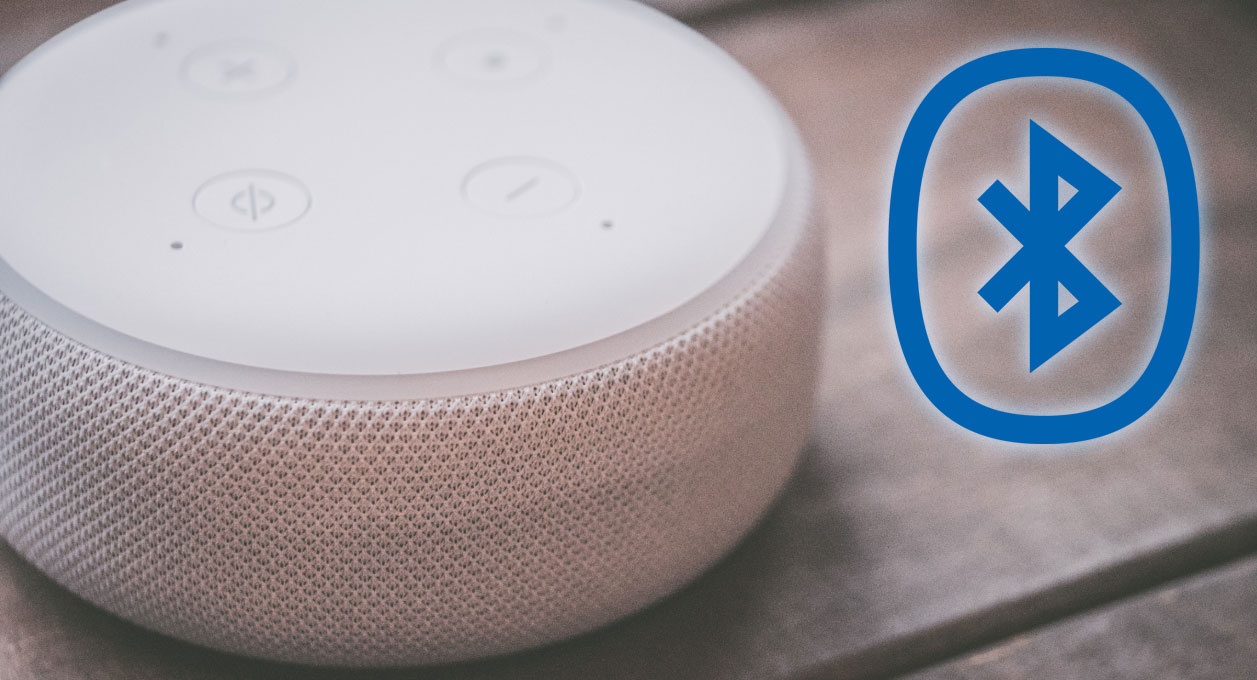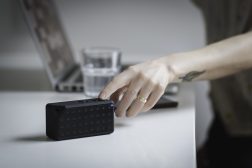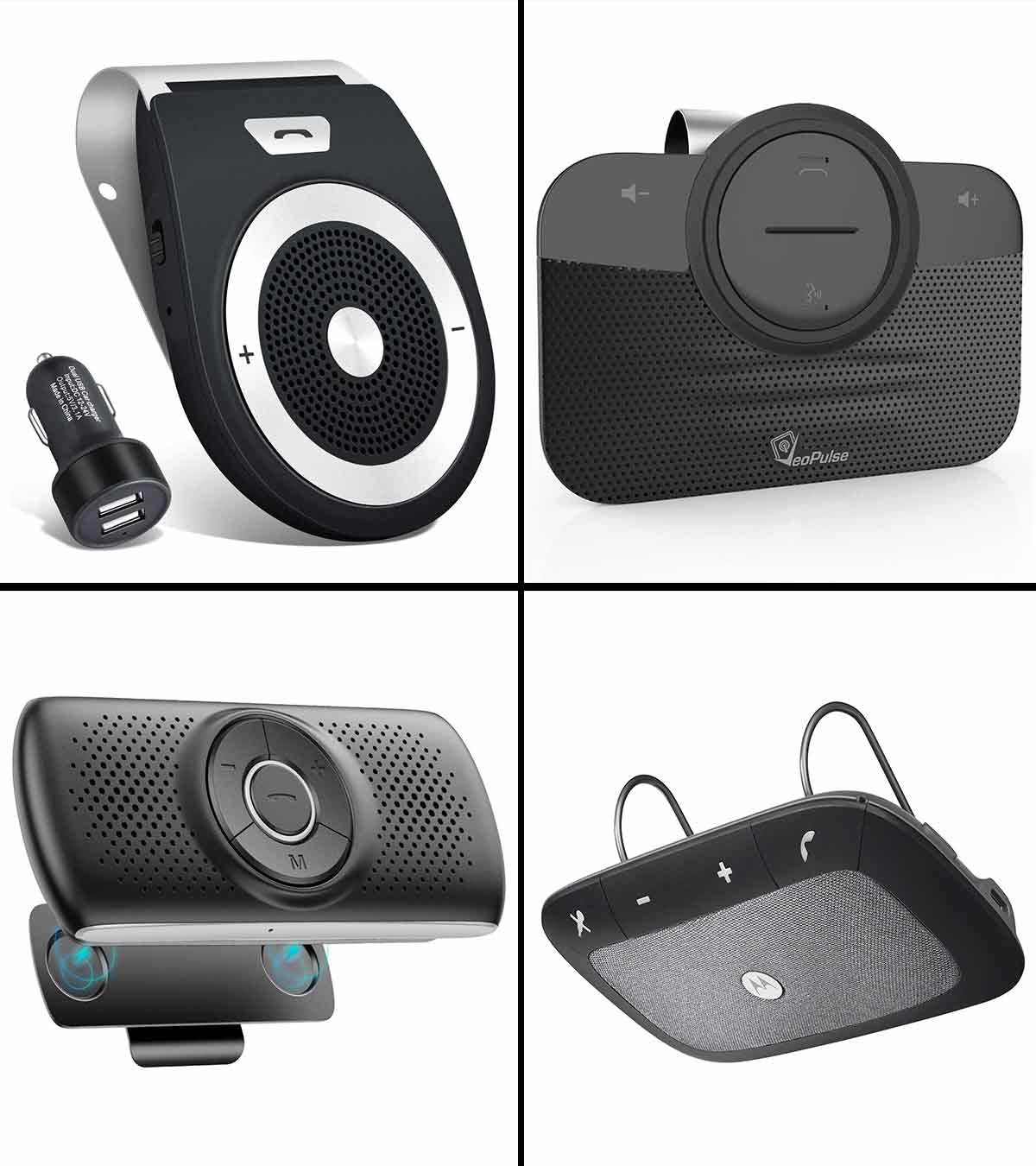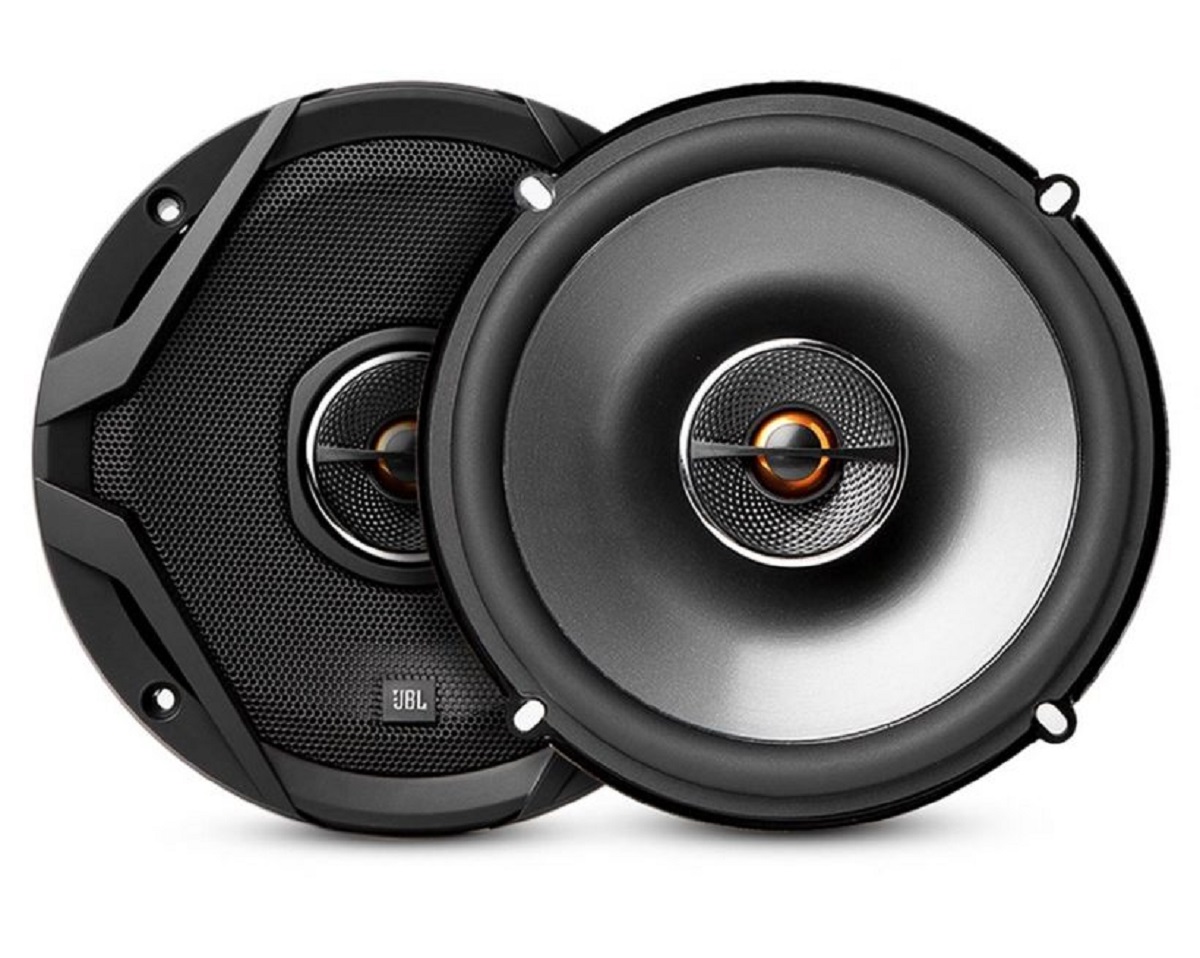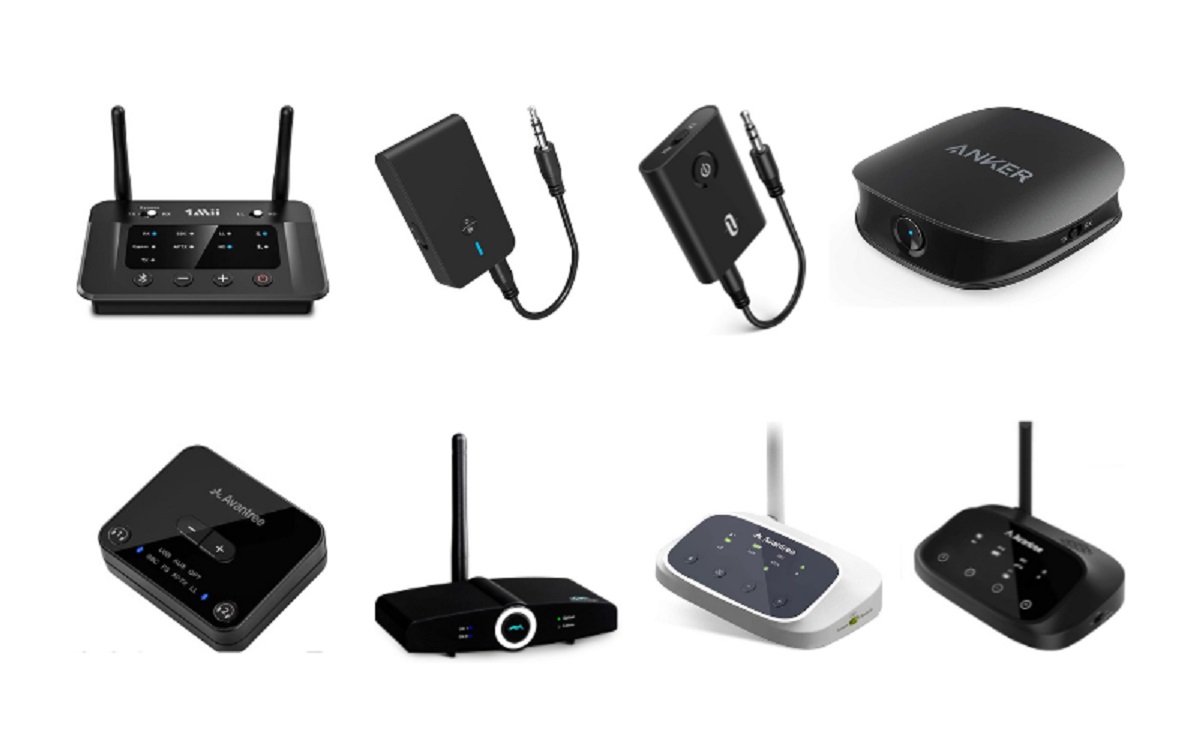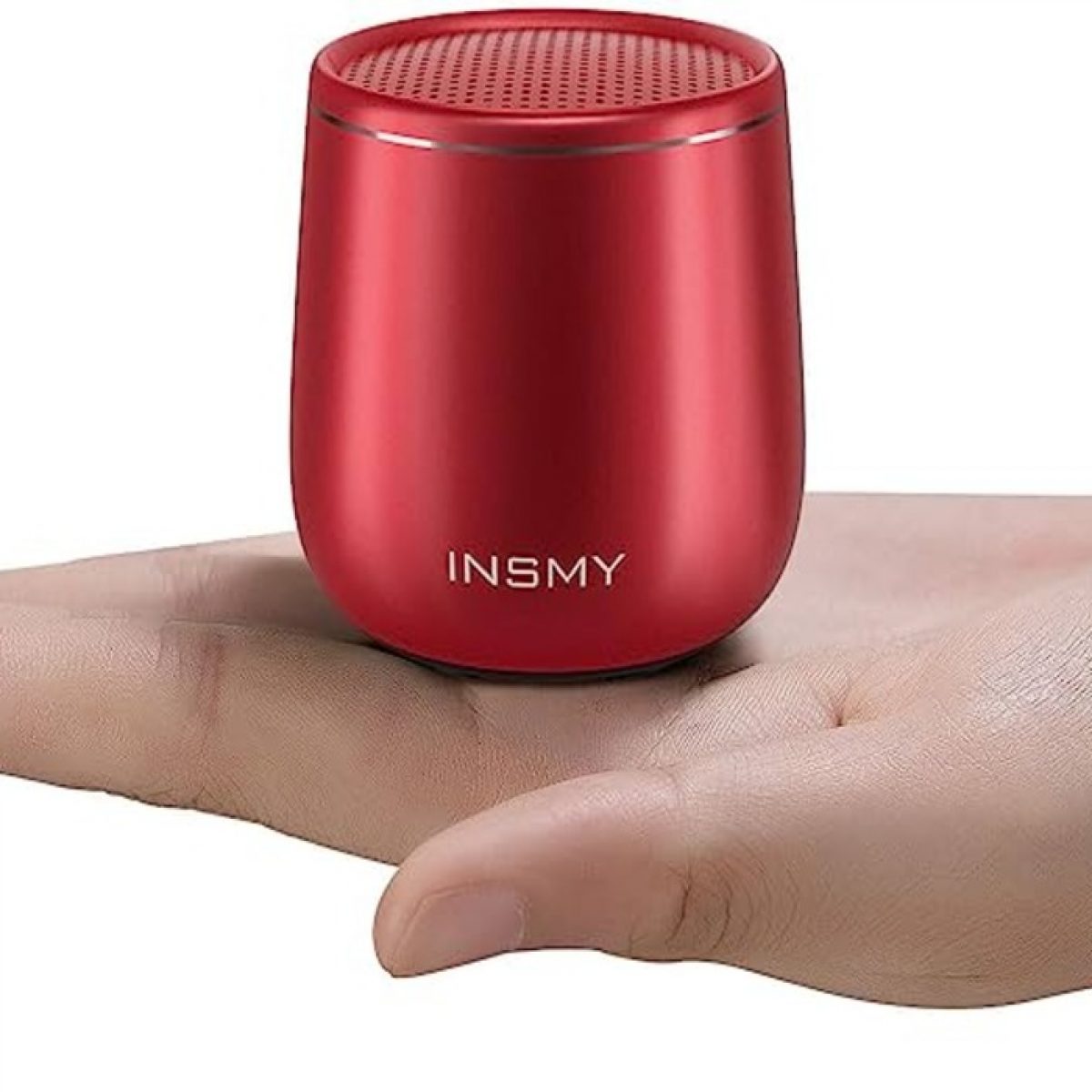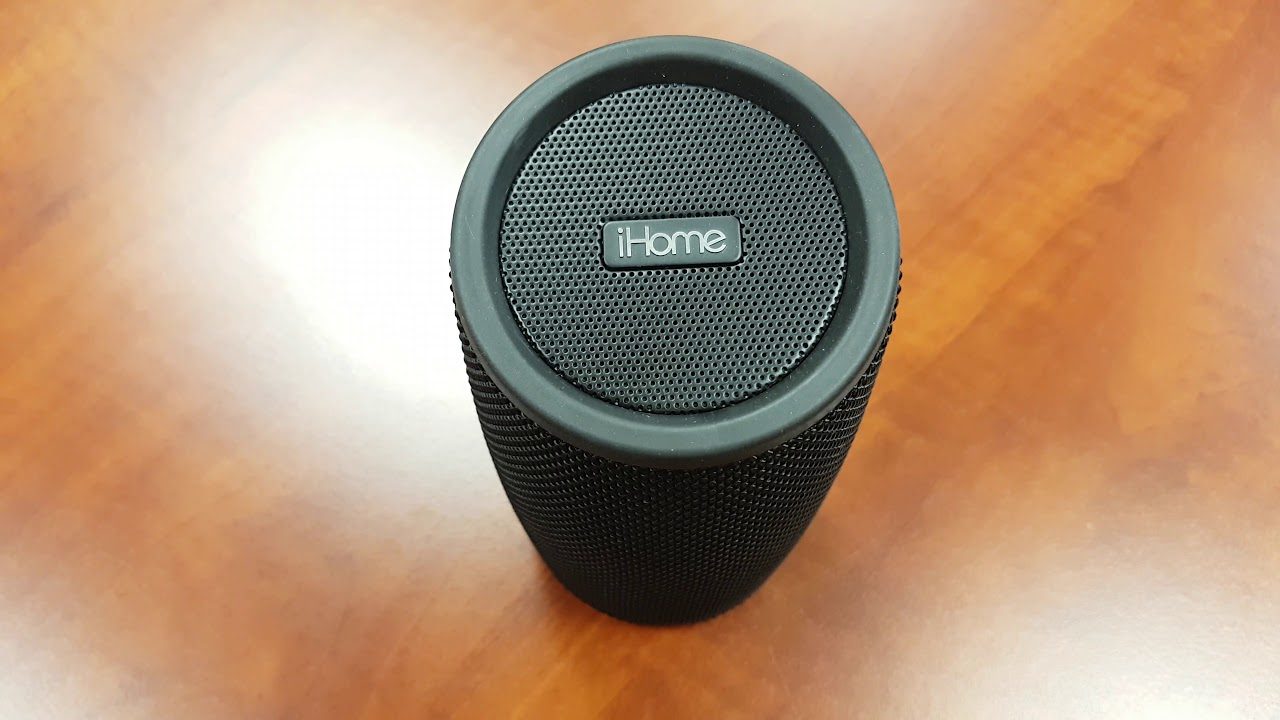Introduction
Welcome to the world of Bluetooth speakers! These nifty devices have become incredibly popular due to their convenience and portability. Whether you’re enjoying music at a beach party, hosting a backyard barbecue, or simply relaxing at home, Bluetooth speakers are the perfect companion to enhance your audio experience.
But have you ever wondered how Bluetooth speakers work? How do they connect wirelessly to your devices? What makes them different from traditional wired speakers? In this article, we’ll delve into the fascinating world of Bluetooth technology and unravel the secrets behind these innovative speakers.
Bluetooth is a wireless communication technology that allows devices to exchange data over short distances. It was first introduced by Ericsson in 1994 but has since evolved to become an integral part of our technological ecosystem. It operates on radio waves, which means it doesn’t require any cables or wires to establish a connection.
Bluetooth speakers are portable audio devices that utilize Bluetooth technology to connect wirelessly to your smartphones, tablets, laptops, and other compatible devices. They eliminate the need for messy wires while providing a hassle-free listening experience.
Now that we have a basic understanding of Bluetooth and Bluetooth speakers, let’s dive deeper into the inner workings of these innovative devices. We’ll explore how Bluetooth speakers connect to devices, how they produce high-quality sound, and some additional features and controls you can expect to find.
If you’ve ever encountered any difficulties pairing or connecting your Bluetooth speaker, don’t worry, we’ll also discuss some troubleshooting tips to help you overcome common issues. So, grab your favorite beverage, sit back, and get ready to unlock the mysteries of Bluetooth speakers!
What is Bluetooth?
Bluetooth is a wireless communication technology that allows devices to connect and exchange data over short distances. It was first developed by Ericsson, a Swedish telecommunications company, in 1994. The name “Bluetooth” comes from Harald Bluetooth, a Viking king known for unifying Denmark and Norway.
Bluetooth technology uses radio waves in the 2.4 GHz frequency range to transmit and receive data between devices. It operates on the principle of low-power wireless communication, making it energy-efficient and perfect for portable devices like smartphones, laptops, and of course, Bluetooth speakers.
One of the key advantages of Bluetooth is its simplicity and versatility. Unlike other wireless technologies, such as Wi-Fi, Bluetooth does not require a complicated setup process or network configurations. Devices equipped with Bluetooth can automatically discover and connect to each other.
Bluetooth has evolved over the years, and different versions have been introduced to enhance its capabilities. The earliest version, Bluetooth 1.0, had limited data transfer rates and compatibility issues. However, subsequent versions like Bluetooth 2.0, 3.0, and 4.0 offered faster transfer speeds, improved audio quality, and extended range.
Bluetooth 4.0, also known as Bluetooth Low Energy (BLE), revolutionized the Internet of Things (IoT) industry by enabling power-efficient communication between devices. It allowed for the development of various wearable gadgets, smart home appliances, and health tracking devices.
The latest version of Bluetooth, Bluetooth 5.0, introduced even more significant improvements. It boasts faster data transfer speeds, increased range, and improved stability. Bluetooth 5.0 also supports advanced audio features like high-quality audio codecs and multiple device connections.
In summary, Bluetooth is a wireless technology that facilitates seamless communication between devices over short distances. From transferring files between phones to streaming music from your smartphone to a Bluetooth speaker, this versatile technology has become an integral part of our connected world.
What are Bluetooth Speakers?
Bluetooth speakers are portable audio devices that use Bluetooth technology to connect wirelessly to your smartphones, tablets, laptops, and other compatible devices. They offer a convenient and hassle-free way to enjoy your favorite music, podcasts, or audiobooks without the need for wires or cables.
Bluetooth speakers come in various shapes, sizes, and designs to cater to different needs and preferences. Some are compact and designed for on-the-go use, while others are larger and intended to fill a room with rich, immersive sound. Regardless of their size, Bluetooth speakers are known for their portability and ease of use.
Most Bluetooth speakers feature built-in rechargeable batteries, allowing you to enjoy music without needing a direct power source. These batteries can last for several hours, depending on the speaker’s capacity and usage. Once the battery is depleted, you can recharge it using a USB cable or a designated charging dock.
One of the key advantages of Bluetooth speakers is their versatility. They can connect to a wide range of devices that support Bluetooth, including smartphones, tablets, laptops, and even smart TVs. This versatility makes them an excellent companion for various situations, whether you’re hosting a small gathering, going for a picnic, or simply relaxing at home.
Another notable feature of Bluetooth speakers is their portability. Most Bluetooth speakers are compact and lightweight, allowing you to easily carry them in your bag or pocket. Some models also come with additional features like waterproofing, shock resistance, and built-in handles, making them ideal for outdoor use and travel.
Bluetooth speakers also offer convenient controls for easy playback and volume adjustment. Many models feature intuitive buttons on the speaker itself, allowing you to play, pause, skip tracks, and adjust volume directly without needing to access your connected device. Some speakers even come with built-in microphones, enabling hands-free calling and voice assistant integration.
Overall, Bluetooth speakers provide a convenient and wireless way to enjoy high-quality audio wherever you go. Whether you’re listening to music at a party, watching a movie on your laptop, or having a conference call, Bluetooth speakers offer a portable and versatile audio solution.
How do Bluetooth Speakers Connect to Devices?
Bluetooth speakers utilize Bluetooth technology to establish a wireless connection with your devices. The process of connecting a Bluetooth speaker to a device is relatively straightforward and typically involves the following steps:
- Enable Bluetooth: Ensure that the Bluetooth feature is turned on and activated on both your Bluetooth speaker and the device you want to connect it to. This can usually be done through the settings menu or a designated button on the device.
- Put the Bluetooth Speaker in Pairing Mode: Most Bluetooth speakers have a dedicated pairing button or a combination of buttons that need to be pressed to activate the pairing mode. Refer to the user manual of your specific speaker model for instructions on how to enable pairing mode.
- Scan for Devices: On your device, go to the Bluetooth settings menu and start scanning for nearby devices. It should display the name or model number of your Bluetooth speaker in the list of available devices.
- Select and Connect: Once your device detects the Bluetooth speaker, select it from the list of available devices and initiate the connection. The pairing process may require you to enter a passcode or confirm a PIN displayed on both devices to establish a secure connection.
- Successful Connection: Once the connection is established, your device will indicate that it is connected to the Bluetooth speaker. The speaker may also emit a confirmation sound or display a light indicator to signify a successful connection.
It is important to note that some Bluetooth speakers support a feature known as NFC (Near Field Communication). NFC allows for quick and effortless connection by simply tapping your NFC-enabled device against the specified area on the speaker. This eliminates the need for manual pairing and authentication.
Most Bluetooth speakers can remember multiple previously connected devices, making it easy to switch between devices without going through the pairing process again. Simply ensure that the Bluetooth feature is enabled on the desired device, and the speaker will automatically connect to it when in range.
Additionally, some Bluetooth speakers offer the ability to connect to multiple devices simultaneously. This feature allows you to connect, for example, your smartphone and tablet to the speaker simultaneously, enabling you to seamlessly switch between different audio sources.
Overall, the process of connecting Bluetooth speakers to devices is user-friendly, and once paired, you can enjoy wireless audio streaming with ease and convenience.
Bluetooth Profiles and Codecs
Bluetooth technology incorporates various profiles and codecs to support different functionalities and enhance the audio experience when using Bluetooth speakers. Let’s take a closer look at these profiles and codecs:
Bluetooth Profiles:
Bluetooth profiles define the functionality and capabilities of Bluetooth devices and enable them to communicate with each other. There are a variety of profiles available, but the two most commonly used for audio streaming are the Advanced Audio Distribution Profile (A2DP) and the Hands-Free Profile (HFP).
The A2DP profile is responsible for high-quality audio streaming between a Bluetooth source device (e.g., smartphone or tablet) and the Bluetooth speaker. It supports stereo audio, allowing you to enjoy your music or other audio content in rich, immersive sound. A2DP also supports basic playback controls, such as play, pause, and track skipping, on the connected device.
The HFP profile, on the other hand, is primarily designed for hands-free calling. It enables you to connect your smartphone to the Bluetooth speaker and use it as a speakerphone for voice calls. This profile also supports features like call answering, call hanging up, and voice dialing.
Bluetooth Codecs:
Codecs are algorithms used to encode and compress audio data for transmission and decode it for playback. Bluetooth speakers utilize various codecs to ensure optimal sound quality during wireless audio streaming. Here are some commonly used Bluetooth codecs:
- SBC (Subband Coding): SBC is the mandatory and default codec for all Bluetooth devices. While it provides decent audio quality, it is considered a basic codec with average performance.
- AAC (Advanced Audio Coding): AAC is a high-quality codec that offers better sound reproduction compared to SBC. It is commonly used by Apple devices and provides a more immersive listening experience.
- aptX: aptX is a proprietary codec developed by Qualcomm that delivers CD-like audio quality. It reduces latency and improves the overall audio performance, provided both the Bluetooth speaker and the source device support aptX.
- LDAC: LDAC is a codec developed by Sony that offers high-resolution audio streaming over Bluetooth. It provides exceptional audio quality, especially when used with LDAC-compatible devices.
It’s important to note that for optimal audio quality, both the source device and the Bluetooth speaker need to support the same codec. If your Bluetooth speaker supports multiple codecs, it will automatically select the appropriate codec based on the capabilities of the source device.
Understanding Bluetooth profiles and codecs can help you make informed decisions when selecting Bluetooth speakers and ensure you enjoy the best possible audio experience.
How do Bluetooth Speakers Produce Sound?
Bluetooth speakers are designed to deliver high-quality audio performance in a compact and portable form. They utilize various components and technologies to produce sound and create an immersive listening experience. Here’s an overview of how Bluetooth speakers produce sound:
Speaker Components:
Bluetooth speakers consist of several key components that work together to produce sound. These components include:
- Speaker Drivers: Bluetooth speakers typically feature multiple speaker drivers. These drivers are responsible for converting electrical signals into audible sound waves. The two most common types of drivers used in Bluetooth speakers are woofers for handling lower frequencies and tweeters for reproducing high frequencies.
- Amplifiers: Bluetooth speakers have built-in amplifiers to help enhance the audio signal and provide sufficient power to drive the speaker drivers. These amplifiers ensure that the sound produced is clear and loud.
- Cabinet: The cabinet or enclosure of a Bluetooth speaker is responsible for housing the speaker components. It plays a crucial role in sound reproduction by preventing sound waves from interfering with each other and causing distortion. The design of the cabinet is carefully engineered to optimize the speaker’s performance.
Wireless Audio Transmission:
Bluetooth speakers receive audio signals wirelessly from connected devices. Once the Bluetooth speaker is paired with a device, it receives the digital audio data and converts it into an analog signal that can be amplified and reproduced through the speaker drivers. The Bluetooth speaker decodes the audio using the selected codec and then sends the analog audio signal to the amplifier for further processing.
Audio Processing:
Bluetooth speakers often come equipped with digital signal processing (DSP) capabilities. DSP allows for real-time audio adjustments and enhancements to optimize the sound quality. It can fine-tune the audio output by adjusting the frequency response, equalization settings, and other audio parameters. This ensures that the sound produced by the Bluetooth speaker is balanced, clear, and tailored to the speaker’s specifications.
Spatial Sound and Stereo:
Many Bluetooth speakers support spatial sound and stereo separation. By incorporating multiple speaker drivers, Bluetooth speakers can provide a wider soundstage, creating the illusion of sound coming from different directions. This enhances the listening experience and makes the sound more immersive and realistic, especially when listening to music or watching movies.
Audio Enhancements and EQ:
Some Bluetooth speakers offer additional audio enhancements and equalizer (EQ) settings. These features allow users to customize the sound according to their preferences. Users can adjust bass, treble, or other frequency ranges to achieve the desired audio profile. This flexibility ensures that the sound output meets individual preferences and adapts to different environments.
By understanding how Bluetooth speakers produce sound, you can appreciate the technology behind these portable audio devices. Whether you’re enjoying music, watching videos, or engaging in conference calls, Bluetooth speakers deliver impressive sound quality in a convenient and wire-free package.
Battery Life and Charging
Battery life is a crucial consideration when it comes to Bluetooth speakers, as it determines how long you can enjoy your music on-the-go. Fortunately, Bluetooth speakers are designed to be energy-efficient while providing a reasonable amount of playtime. Let’s explore the battery life and charging capabilities of these portable devices:
Battery Life:
Bluetooth speakers are equipped with built-in rechargeable batteries, typically lithium-ion (Li-ion) or lithium-polymer (LiPo) batteries. The battery capacity can vary depending on the speaker’s size, output power, and other factors. Most Bluetooth speakers offer an average battery life of 8 to 12 hours of continuous playback, but this can vary significantly from model to model.
The actual battery life may also depend on usage factors such as the volume level, audio content, and whether additional features like LED lights or microphone usage are enabled. Higher volume levels and more power-demanding features can reduce the battery life. Additionally, Bluetooth range can affect battery consumption, as a weaker connection may require more power for stable audio streaming.
Charging:
To charge a Bluetooth speaker, you can typically use a USB cable. Many speakers come with a USB-C or micro-USB port for charging. Some models may include a charging dock or wireless charging capabilities for added convenience. Charge times can range from a few hours for smaller speakers to several hours for larger ones with higher battery capacities.
It is essential to use the provided charging cable and a reliable power source to ensure safe and effective charging. Avoid using third-party cables or chargers that may not provide the appropriate voltage or current, as this can potentially damage the battery or the speaker itself.
Some Bluetooth speakers also offer the option to charge devices using the speaker’s battery. This feature, commonly referred to as a power bank or USB charging port, allows you to connect your smartphone or other devices to the speaker and charge them on the go.
Battery Indicator:
Many Bluetooth speakers have built-in battery indicators to provide information about the remaining battery life. These indicators can be in the form of LED lights, a display panel, or a dedicated mobile app. Battery indicators help you keep track of how much power is left, allowing you to plan your usage accordingly and avoid surprises when the battery runs low.
It’s worth noting that battery performance can diminish over time as the battery undergoes multiple charge cycles. To maximize the lifespan of the battery, it is recommended to follow the manufacturer’s guidelines for charging and avoiding extreme temperature conditions.
Understanding the battery life and charging capabilities of Bluetooth speakers allows you to make informed decisions when selecting a device and ensures that you can enjoy your favorite music for extended periods without interruption.
Bluetooth Speaker Features and Controls
Bluetooth speakers offer a range of features and controls that enhance your audio experience and make using the device more convenient. Let’s explore some of these features and controls commonly found in Bluetooth speakers:
Playback Controls:
Most Bluetooth speakers come with intuitive playback controls located on the speaker itself. These controls allow you to play, pause, skip tracks, and adjust volume directly without needing to access your connected device. With a simple press of a button, you can quickly control your music playback and volume levels.
Hands-Free Calling:
Some Bluetooth speakers feature built-in microphones, enabling hands-free calling. When your smartphone is connected via Bluetooth, you can answer incoming calls directly from the speaker. You can also use voice commands to make calls or interact with your phone’s voice assistant, allowing for a convenient and safe calling experience.
Auxiliary Input:
In addition to Bluetooth connectivity, many Bluetooth speakers also provide an auxiliary input, often in the form of a 3.5mm audio jack. This allows you to connect non-Bluetooth devices, such as MP3 players or computers, using a standard audio cable. The auxiliary input ensures compatibility with a wider range of devices and gives you more flexibility in audio source options.
Waterproof and Weatherproof Design:
For outdoor use and protection against the elements, some Bluetooth speakers feature waterproof or weatherproof designs. These speakers are built to withstand dust, splashes, and even immersion in water to a certain extent, depending on their IPX rating. This feature makes them ideal for use at the beach, poolside, or during outdoor activities in various weather conditions.
LED Lights and Visual Effects:
Many Bluetooth speakers incorporate LED lights or visual effects for added flair. These lights can enhance the visual experience during music playback, creating a dynamic ambiance that synchronizes with the audio. Some speakers offer customizable lighting options, allowing you to adjust the colors and patterns to suit your mood or the occasion.
Speakerphone Functionality:
In addition to hands-free calling, some Bluetooth speakers also offer full speakerphone functionality. These speakers include noise-canceling microphones to ensure clear and crisp voice transmission during conference calls or group chats. The speakerphone feature provides a convenient solution for hands-free communication in professional or personal settings.
Mobile App Control:
Some Bluetooth speakers come with dedicated mobile apps that enhance the user experience. These apps allow you to access additional features, customize audio settings, apply EQ presets, update firmware, and sync with other smart devices. Mobile app control provides an elevated level of customization and convenience.
These are just a few of the many features and controls available in Bluetooth speakers. Manufacturers continuously innovate and introduce new functionalities to meet the diverse needs of users. When purchasing a Bluetooth speaker, consider the features and controls that align with your preferences and usage requirements.
Pairing and Connecting Bluetooth Speakers
Pairing and connecting a Bluetooth speaker to your devices is a straightforward process that allows you to enjoy wire-free audio streaming. Let’s take a closer look at the steps involved in pairing and connecting Bluetooth speakers:
1. Enable Bluetooth:
Ensure that the Bluetooth feature is turned on and activated on both the Bluetooth speaker and the device you want to connect it to. You can typically find the Bluetooth settings in the device’s settings menu or by accessing the quick settings panel.
2. Enable Pairing Mode:
Put the Bluetooth speaker into pairing mode. Most speakers have a dedicated pairing button or a combination of buttons that need to be pressed and held to enable pairing mode. Refer to the user manual of your specific speaker model for instructions on how to activate pairing mode.
3. Scan for Devices:
On your device, go to the Bluetooth settings menu and start scanning for nearby devices. The Bluetooth settings menu can typically be accessed through the device’s settings or notifications panel. The Bluetooth menu will display the name or model number of your Bluetooth speaker in the list of available devices.
4. Select and Connect:
Once your device detects the Bluetooth speaker, select it from the list of available devices to initiate the connection. The pairing process may require you to enter a passcode or confirm a PIN displayed on both the device and the speaker for secure authentication. Follow the prompts on the device’s screen to complete the pairing process.
5. Successful Connection:
Once the pairing is complete, your device will indicate that it is connected to the Bluetooth speaker. The speaker may also emit a confirmation sound or display a light indicator to signify a successful connection. You can now start playing audio on your device, and it will stream wirelessly to the Bluetooth speaker.
It’s important to note that the specific pairing and connection process may vary slightly depending on the brand and model of both the Bluetooth speaker and your device. Always refer to the user manual or manufacturer’s instructions for detailed steps specific to your device.
Some Bluetooth speakers support NFC (Near Field Communication), which allows for quick and effortless connection. By simply tapping your NFC-enabled device against the specified area on the speaker, it will automatically initiate the pairing process, eliminating the need for manual pairing and authentication.
Most Bluetooth speakers can store information about previously paired devices in their memory. This allows for quick reconnection to the device without going through the pairing process again. Simply make sure the Bluetooth feature is enabled on the device, and the speaker will automatically connect when in range.
Understanding the pairing and connection process of Bluetooth speakers ensures that you can easily set up and enjoy wireless audio streaming with your favorite devices.
Troubleshooting Bluetooth Speaker Issues
While Bluetooth speakers offer a convenient and wireless audio experience, occasional issues may arise. Understanding common troubleshooting techniques can help resolve these issues and ensure uninterrupted enjoyment of your Bluetooth speaker. Here are some troubleshooting steps to address common Bluetooth speaker issues:
1. Check the Bluetooth Connection:
Ensure that both the Bluetooth speaker and the device you’re connecting to are within the specified Bluetooth range. Move them closer to each other to eliminate any potential connection problems caused by distance or obstructions. Also, check that Bluetooth is enabled on both devices and that they are appropriately paired.
2. Restart and Reset:
If you’re experiencing connectivity issues, try restarting both the Bluetooth speaker and the device you’re connecting to. Sometimes, a simple restart can resolve temporary glitches. Additionally, if there is a reset button or option available on the speaker, try resetting it to its factory settings, which can help resolve persistent connection problems.
3. Update Firmware and Drivers:
Check if there are any available firmware updates for your Bluetooth speaker. Manufacturers often release firmware updates that can address known issues and improve compatibility. Additionally, ensure that your device’s Bluetooth drivers are up to date, as outdated drivers can sometimes cause connectivity problems.
4. Disconnect and Reconnect:
If you’re experiencing intermittent audio dropouts or connectivity issues during playback, try disconnecting and reconnecting the Bluetooth connection. On your device, disable Bluetooth temporarily, and then re-enable it to establish a fresh connection with the speaker. This can help resolve temporary connection glitches.
5. Clear Pairing History:
If you’ve encountered persistent pairing issues, try clearing the pairing history on both the Bluetooth speaker and your device. By doing this, you remove any previously stored and potentially conflicting pairing information. After clearing the pairing history, go through the pairing process again to establish a new connection.
6. Check Battery Levels:
If your Bluetooth speaker is not turning on or is experiencing power-related issues, check the battery level. Ensure that the battery is adequately charged and that the charging cable is securely connected. If the battery is low, charging the speaker for a sufficient amount of time should resolve the issue.
7. Disable Interfering Devices:
Other devices in close proximity may interfere with the Bluetooth connection. Wi-Fi routers, microwave ovens, and other electronic devices can emit signals that disrupt Bluetooth signals. Try moving the Bluetooth devices away from potential sources of interference to improve the connection stability.
If these troubleshooting steps do not resolve the issues, it is advisable to consult the user manual provided with your Bluetooth speaker or contact the manufacturer’s technical support for further assistance. They might offer specific recommendations or solutions tailored to your device model.
By troubleshooting common Bluetooth speaker issues, you can quickly address connectivity or performance problems, ensuring a seamless audio experience with your Bluetooth speaker.
Conclusion
Bluetooth speakers have revolutionized the way we listen to music, offering a convenient, wire-free audio experience. They utilize Bluetooth technology to connect wirelessly to our smartphones, tablets, and laptops, providing a portable and versatile audio solution.
In this article, we explored the fundamentals of Bluetooth technology and how Bluetooth speakers work. We discussed the process of pairing and connecting Bluetooth speakers to devices, as well as troubleshooting common issues that may arise during usage.
We also delved into the features and controls commonly found in Bluetooth speakers, such as playback controls, hands-free calling, auxiliary inputs, and even waterproof and weatherproof designs. These features enhance the user experience, providing convenience, versatility, and added functionality.
Understanding Bluetooth profiles and codecs helps us make informed decisions when selecting Bluetooth speakers, ensuring compatibility and optimal audio quality. We learned about the Advanced Audio Distribution Profile (A2DP), Hands-Free Profile (HFP), and various codecs like SBC, AAC, aptX, and LDAC.
Battery life and charging capabilities are crucial considerations for Bluetooth speakers. Knowing how to maximize battery life and properly charge the speaker ensures that we can enjoy extended playtime without interruptions.
Despite the occasional connectivity or performance issues, familiarity with troubleshooting steps such as checking the Bluetooth connection, updating firmware, and clearing pairing history can help resolve these problems and maintain a reliable connection with our Bluetooth speakers.
In conclusion, Bluetooth speakers have significantly enhanced our audio experiences, providing wireless connectivity, portability, and impressive sound quality. Whether we’re partying outdoors, relaxing at home, or hosting a social gathering, Bluetooth speakers are the perfect companion for delivering high-quality audio, anytime and anywhere.







